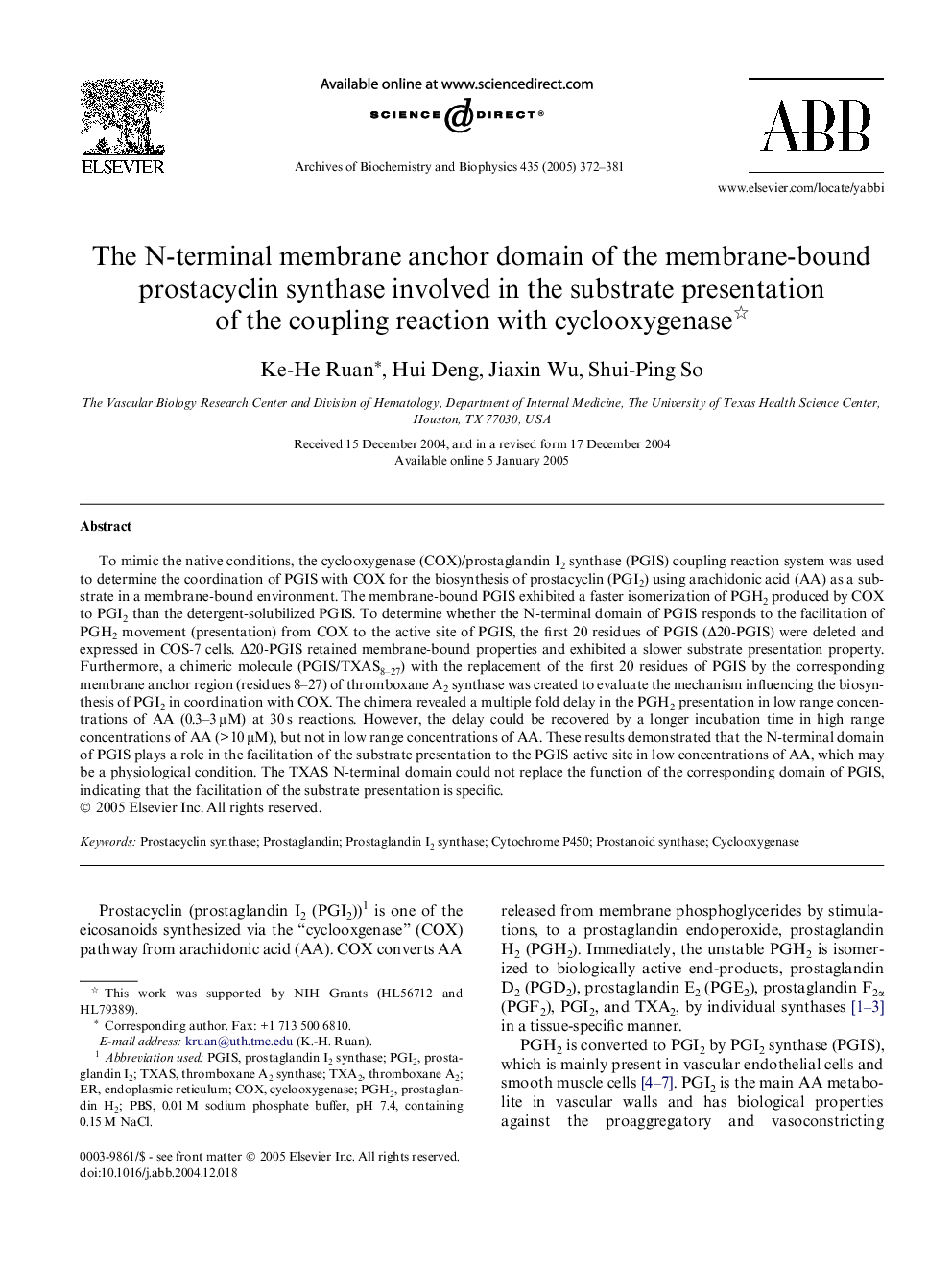| Article ID | Journal | Published Year | Pages | File Type |
|---|---|---|---|---|
| 9882298 | Archives of Biochemistry and Biophysics | 2005 | 10 Pages |
Abstract
To mimic the native conditions, the cyclooxygenase (COX)/prostaglandin I2 synthase (PGIS) coupling reaction system was used to determine the coordination of PGIS with COX for the biosynthesis of prostacyclin (PGI2) using arachidonic acid (AA) as a substrate in a membrane-bound environment. The membrane-bound PGIS exhibited a faster isomerization of PGH2 produced by COX to PGI2 than the detergent-solubilized PGIS. To determine whether the N-terminal domain of PGIS responds to the facilitation of PGH2 movement (presentation) from COX to the active site of PGIS, the first 20 residues of PGIS (Î20-PGIS) were deleted and expressed in COS-7 cells. Î20-PGIS retained membrane-bound properties and exhibited a slower substrate presentation property. Furthermore, a chimeric molecule (PGIS/TXAS8-27) with the replacement of the first 20 residues of PGIS by the corresponding membrane anchor region (residues 8-27) of thromboxane A2 synthase was created to evaluate the mechanism influencing the biosynthesis of PGI2 in coordination with COX. The chimera revealed a multiple fold delay in the PGH2 presentation in low range concentrations of AA (0.3-3 μM) at 30 s reactions. However, the delay could be recovered by a longer incubation time in high range concentrations of AA (>10 μM), but not in low range concentrations of AA. These results demonstrated that the N-terminal domain of PGIS plays a role in the facilitation of the substrate presentation to the PGIS active site in low concentrations of AA, which may be a physiological condition. The TXAS N-terminal domain could not replace the function of the corresponding domain of PGIS, indicating that the facilitation of the substrate presentation is specific.
Related Topics
Life Sciences
Biochemistry, Genetics and Molecular Biology
Biochemistry
Authors
Ke-He Ruan, Hui Deng, Jiaxin Wu, Shui-Ping So,
